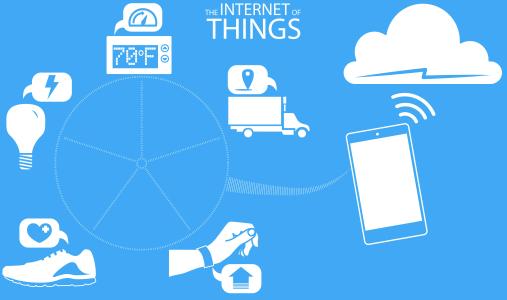The growth of the Internet of Things (IoT) has dramatically changed the way consumers interact with their cars, homes, and appliances, but the aptly named second digital revolution is also having a major impact on the industry. From machine learning, machine-to-machine communication to artificial intelligence, the Industrial Internet of Things (IIoT) takes IoT technologies and applies them directly to industrial problems, increasing efficiency and productivity in the process.
While consumer-centric IoT solutions have dominated the headlines in recent years, and the relatively long lifecycle of industrial equipment has limited growth in the sector to date, large enterprises and manufacturers have begun to adopt it at scale. IIoT, which is attracted by push-driven opportunities. Reduce costs and increase competitiveness.
A survey conducted by software company Infor found that developments in the IIoT environment in the coming years are expected to further increase adoption rates, leaving few companies ignoring its future. The survey found that 52% of manufacturers consider IoT to be a top priority for their business.
smart dust
The concept of tiny sensors as big as sand, capable of detecting everything from chemicals to vibrations, was first proposed in the early 1990s, but little progress was made in the ensuing years to make this intriguing idea a reality. . . However, interest in this emerging technology has grown recently, with research firm Gartner predicting that smart dust will develop over the next five to 10 years.
The applications for these connected smart dust particles in the IIoT are almost endless, from oil exploration companies spreading smart dust to monitor rock movement to small sensors throughout factory equipment, constantly looking for changes and problems.
Currently, smart dust sensors remain out of reach, mainly due to the difficulty of miniaturization and the high cost of producing large quantities of products. However, they are slowly but surely becoming cheaper to make, so before long billions of tiny smart dust particles will be populating the world.
pilot-less airplane
Due to its many useful applications, unmanned aerial vehicles or drones have quickly become one of the most talked about products in the technology world. In the near future, these machines could act as sensors or play an important role in IIoT by providing connectivity between sensors and data collection points.
Drones may not yet be considered fully connected IIoT devices, but they can carry a full range of sensors and are autonomous machines capable of collecting vast amounts of valuable data. Construction companies can use drones to conduct routine land surveys and feed this data into software to ensure construction goes according to plan, sending out alerts if anything is found to be incorrect or poorly constructed.
However, drones are more than just data collectors, these devices may be able to act quickly on the data collected and communicate with other drones in the IIoT to overcome problems together.
future agriculture
IIoT can be most useful far away from the factory floor on countless farms around the world. Leveraging the latest technology is nothing new to the agriculture industry, but implementing smart, connected IIoT projects enables farmers to take advantage of the vast amounts of data generated by their farms.

The sheer size of many farms makes manual surveys ineffective and difficult, leading farmers to turn to IIoT solutions. Oyster farmer Ward Aquafarms, with the help of telecommunications company Verizon, has deployed an IIoT program to leverage satellite imaging and IIoT tracking technology to monitor farming operations from the start, maximizing productivity and ensuring food quality in the supply chain. Harvest delivery.
Tony Judd, managing director of Verizon UK, said: “Agriculture may be the perfect business case for the implementation of the Internet of Things, so we are likely to see a greater expansion of its application in the next five years.” “In areas such as precision agriculture, related to soil, weather, Real-time data on air quality and hydration levels can help farmers make better crop planting and harvest decisions.”
aerospace
Aerospace companies have introduced IIoT solutions for tracking tools and parts mainly on the factory floor, and some are starting to increase the number of in-vehicle IoT devices. An aircraft that knows when it actually has a maintenance problem will save airlines a lot of man-hours and money.
Taleris, a joint venture between GE and Accenture, is at the forefront of developing IoT solutions for airlines, designed to minimize delays and disruptions by analyzing data collected from sensors on aircraft.
Adoption of these IoT technologies in aerospace has been slow because cost savings are difficult to estimate, but as the benefits of these systems become increasingly apparent, airline interest will increase. The widespread use of analytical programs with the ability to proactively monitor aircraft will not only improve airline turnaround times but also help serve customer needs more efficiently.
energy network
When IoT is fully integrated into their industry, energy companies can expect to see fundamental changes to their operations. Surges in energy consumption caused by major television broadcasts and weather events have long plagued utility companies. However, effective energy demand management through IIoT can reduce the need for investment in energy networks and power plants.
Smart meters are an example of the industry’s move toward IoT technology, although currently they only record usage and timing. Utility companies may provide pricing information to these meters, which in turn can interact with other IoT devices to use energy at the most efficient time.
New oil and gas pipelines are equipped with sensors that detect leaks and notify maintenance teams, so problems are fixed before they cause problems and the number of outages and outages is minimized. Any improvements that IoT can enable in energy supply management will become increasingly valuable as utilities seek the most efficient ways to handle multiple energy sources in decentralized networks.
Related recommendations: Common communication methods in the Internet of Things